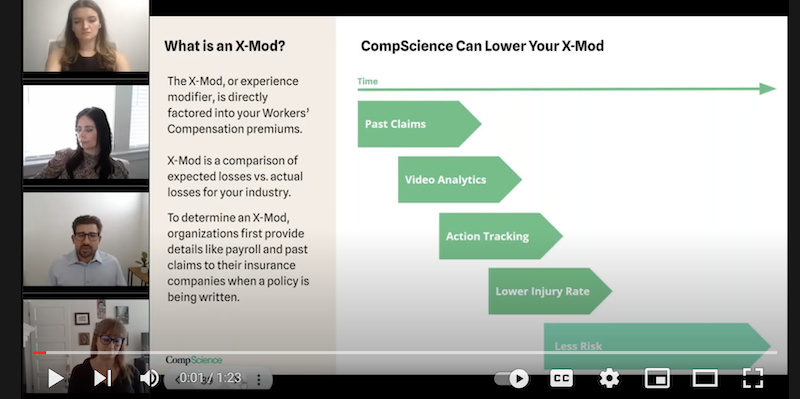
Making Safety a Smart Investment
How CompScience Transforms Workplace Risk Management Workplace safety goes beyond compliance. It is essential for business continuity, operational eff[...]
Read moreLatest Posts

Why Is Workplace Accident Prevention Underinvested?
There are a number of reasons why workplace accident prevention may be underinvested but here are some facts. $55B is spent on workers’ compensation in the US, but only 2% of premiums go to safety 2.8m non-fatal workplace accidents annually in the US 360,000 deaths annually worldwide Here are 5 reasons your organization may […]
Read more
Predictive analytics can lower your Xmod and insurance rates.
With predictive analytics generated by applying computer vision to video of the workplace, CompScience has created tool that can actually predict accidents before they happen. Transcript Kristopher Mizel: So the experience mod is a lagging indicator. It doesn’t take into account this year’s losses. It doesn’t take into account last year’s losses. It takes […]
Read more
Using Deep Learning AI with Video Analytics Can Quantify Activities, Hazards, and Near Misses in the Workplace
Video analytics using deep learning AI can be used to produce a rich picture of activities, hazards, and near misses in the workplace by analyzing video footage of the workplace. According to a survey conducted by the International Association of Professional Security Consultants (IAPSC), 63% of respondents reported using video surveillance in their workplace, with […]
Read more
What Are The Limitations of Manual Observation of Workplace Risks?
There are several limitations of manual observation of workplace risks which can be overcome by video analytics: Time constraints: Manually observing the workplace for risks can be time-consuming, particularly in larger organizations or facilities. This can make it difficult to consistently and thoroughly assess risks. Subjectivity: Manual observation is subject to the biases and limitations […]
Read more